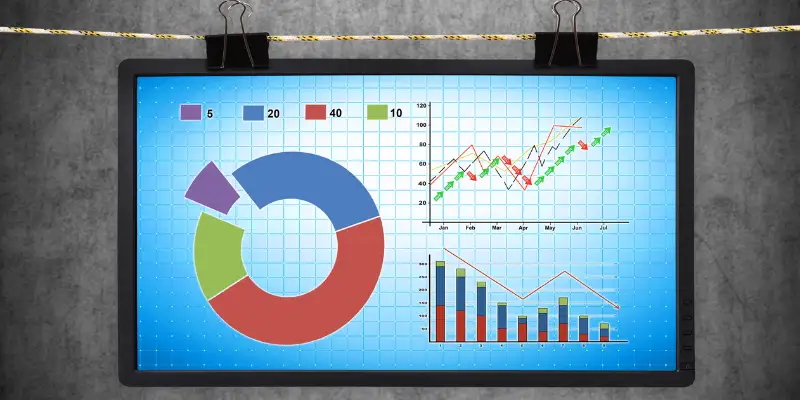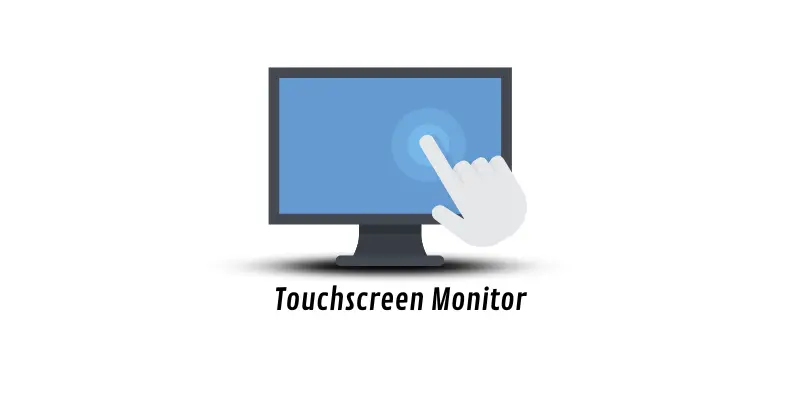What Are Touch Screen Monitors? Learn Everything You Need
Published: 2 Apr 2025
Did you know that over 90% of modern devices use touch screen technology? From smartphones to ATMs and even laptops, touch screens have become an essential part of our daily lives. But what are touch screen monitors, and how do they work? Let’s dive into the world of interactive displays and understand their types, features, and benefits. If you want to learn more about the types of monitors, check out our dedicated article

What Are Touch Screen Monitors?
A touch screen monitor is a type of monitor that lets you interact with a device by touching the screen instead of using a keyboard or mouse. It responds to taps, swipes, and gestures to perform tasks quickly and easily. To detect touch, these monitors use different technologies, like resistive, capacitive, or infrared. They are commonly found in smartphones, tablets, kiosks, and modern computers. Touch screen monitors make navigation faster and improve user experience by offering a direct and interactive way to control devices.

History of Touch Screen Monitors
Touchscreen monitors have made computers and devices easier to use. Instead of pressing buttons, you can simply touch the screen. But how did this technology start? Let’s examine its history.
- The first touch screen was invented in 1965 by E.A. Johnson, a British engineer. He designed it for air traffic control systems.
- The idea of touch technology came from scientists who wanted to make computers simpler. Over time, companies improved the design and made it more useful.
- Touch screens have evolved a lot. Early versions were slow and basic. Now, we have fast, multi-touch screens in smartphones, tablets, and computers.
How Does Touch Screen Monitors Work
Touch screen monitors allow you to interact with a device by simply touching the screen. They detect touch using different technologies and convert your touch into commands. Here’s how the process works:
- Touch Detection: When you touch the screen, sensors recognize your finger or stylus.
- Signal Processing: The screen processes the touch input and sends signals to the device’s system.
- Command Execution: The system translates the touch into an action, like opening an app or scrolling.
- Response Display: The screen instantly updates to show the result of your touch action.
Types of Touch Screen Monitors
Touch screen monitors come in different types, each using a unique technology to detect touch. Below are the main types of touch screen monitors and how they work:
- Resistive Touch Screen: It uses two flexible layers that detect touch when pressed together.
- Capacitive Touch Screen: It uses a glass layer that responds to the electrical charge of your finger.
- Infrared Touch Screen: This device uses invisible infrared light beams that detect when something blocks them.
- Surface Acoustic Wave (SAW) Touch Screen: Uses sound waves across the screen surface to detect touch.
- Optical Touch Screen: Uses cameras or sensors to detect finger movement on the screen.
Features of Touch Screen Monitors
Touch screen monitors have many useful features that make them easy to use. They offer smooth interaction, fast response, and better convenience for users. Here are some key features:
- Supports multi-touch
- Works with a stylus
- Responds quickly
- Lasts long and is easy to maintain
- Displays high resolution
- Recognizes gestures
- Saves energy
- Offers wide viewing angles
- Has a compact design
- Integrates easily
Uses of Touch Screen Monitors
Touch screen monitors are widely used in various fields for their ease of use and convenience. They provide an interactive experience, allowing users to control and operate devices with just a touch. Here are some common uses:
- Point of Sale (POS) Systems: Stores use them to check out customers.
- Kiosks: Airports and malls use them to give information.
- Medical Equipment: Doctors use them to see patient details.
- Interactive Displays: Schools and museums use them for learning.
- Mobile Devices: Phones and tablets use touch screens to work.
- Gaming: Video game consoles are used for playing games.
- ATMs: People use them to take out money and check balances.
- Self-checkout stations: You use them to buy things at stores.
- Industrial Controls: Factories use them to control machines.
- Home Automation: People use them to control lights and temperature at home.
Advantages of Touch Screen Monitors
Touch screen monitors have many benefits that make them popular in different areas. They are easy to use and increase efficiency. Here are some advantages:
| Benefits |
|---|
|
Disadvantages of Touch Screen Monitors
Touch screen monitors are useful but have some problems. Here are a few disadvantages:
| Drawbacks |
|---|
|
Conclusion
So, guys, it’s time to finish up! In this article, we’ve covered touch screen monitors in detail. If you’re looking for an easy way to interact with your computer, I recommend considering a touch screen monitor. They are great for simple tasks and can make your work more efficient. Explore different options and choose the one that suits your needs best.
FAQs about Touch Screen Monitors
Here are some beginner-friendly common questions about touch screen monitors:
What are the 5 uses of touch screen monitors?
- Restaurants for ordering and payments.
- Hospitals for patient monitoring.
- Cars for navigation and media.
- Offices for presentations.
- Smart homes for security and controls.
What are two disadvantages of touch screen monitors?
One disadvantage is that touch screens can get dirty quickly due to fingerprints and smudges. Another disadvantage is that they can be less durable than regular monitors because they are more sensitive to impact damage.
How durable are touch screen monitors?
Touchscreen monitors are generally durable, but they can be more sensitive than regular monitors. If not handled carefully, they can get scratched. Using screen protectors or cleaning the screen regularly can help maintain their condition.
Do I need to use a stylus with a touchscreen monitor?
No, you don’t need a stylus with a touch screen monitor. You can use your fingers to interact with the screen. However, a stylus can be useful for tasks that need more precision, like drawing or writing.
What types of touch screen monitors are there?
There are several types of touch screen monitors, such as capacitive, resistive, and infrared. Capacitive monitors are more sensitive and respond better to light touch. Resistive monitors are usually less expensive but require more pressure to work.
Can I use a touch screen monitor with any computer?
Yes, most touch screen monitors can be connected to any computer with the right ports. You may need to install drivers or compatible software. Just ensure your computer meets the monitor’s system requirements.

- Be Respectful
- Stay Relevant
- Stay Positive
- True Feedback
- Encourage Discussion
- Avoid Spamming
- No Fake News
- Don't Copy-Paste
- No Personal Attacks

- Be Respectful
- Stay Relevant
- Stay Positive
- True Feedback
- Encourage Discussion
- Avoid Spamming
- No Fake News
- Don't Copy-Paste
- No Personal Attacks
